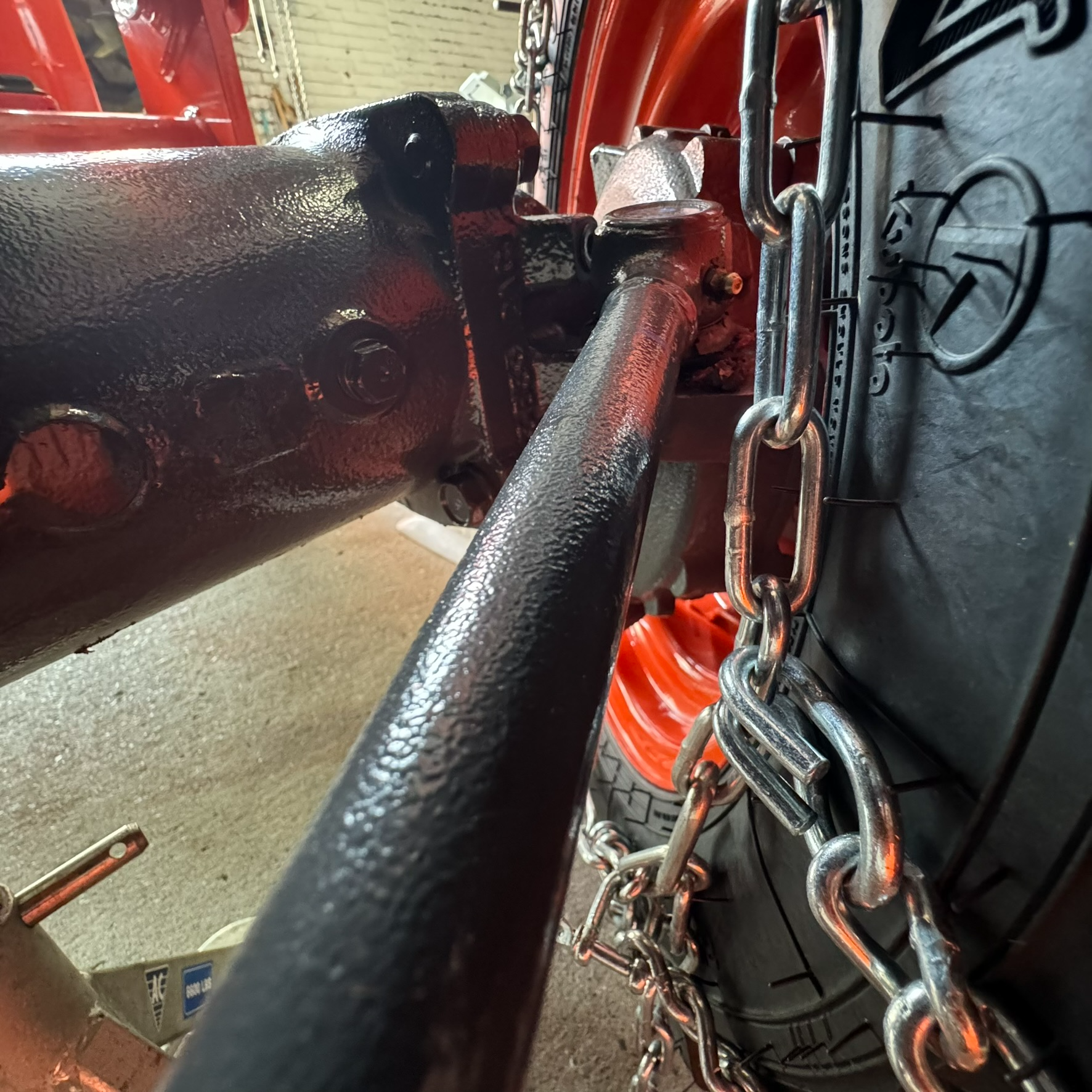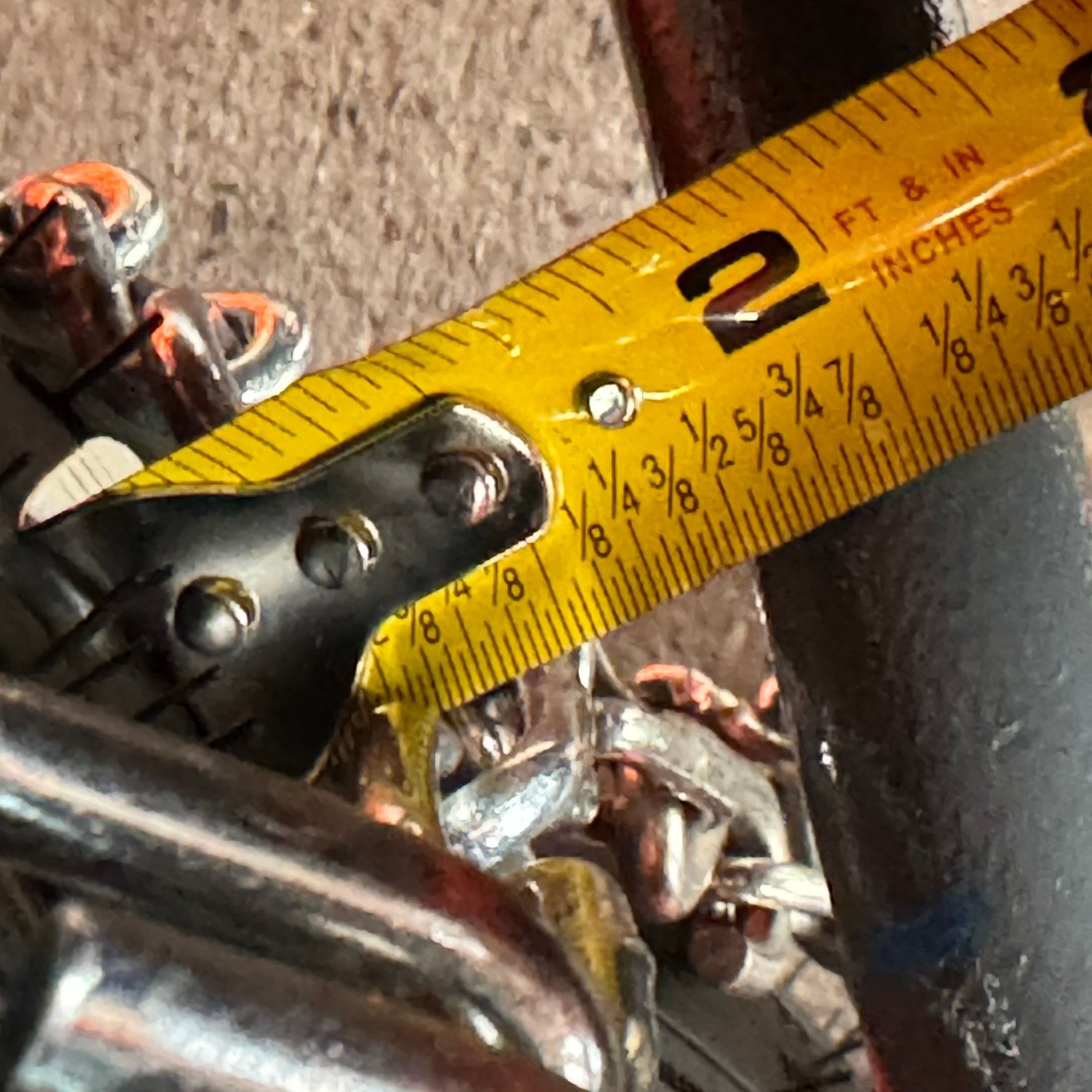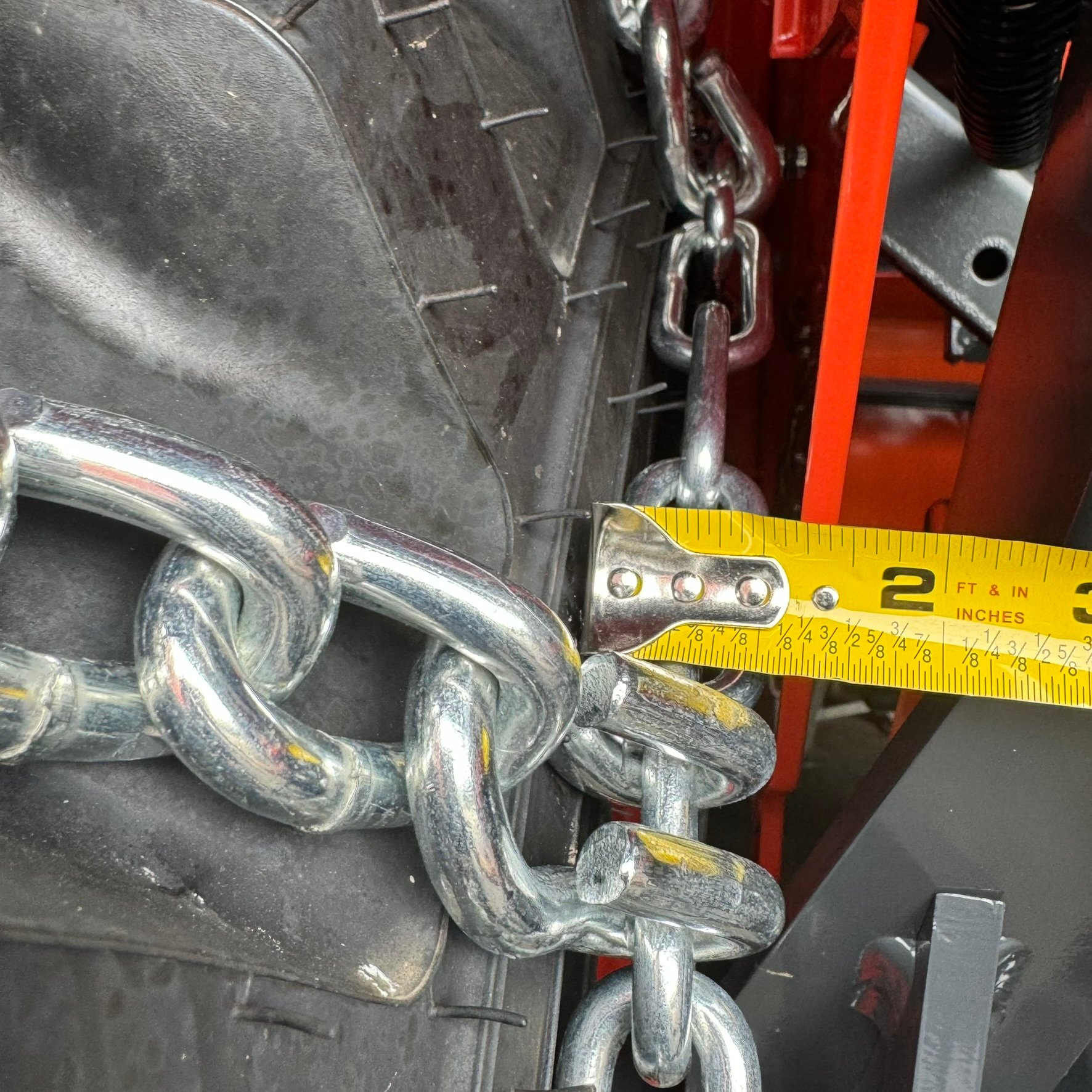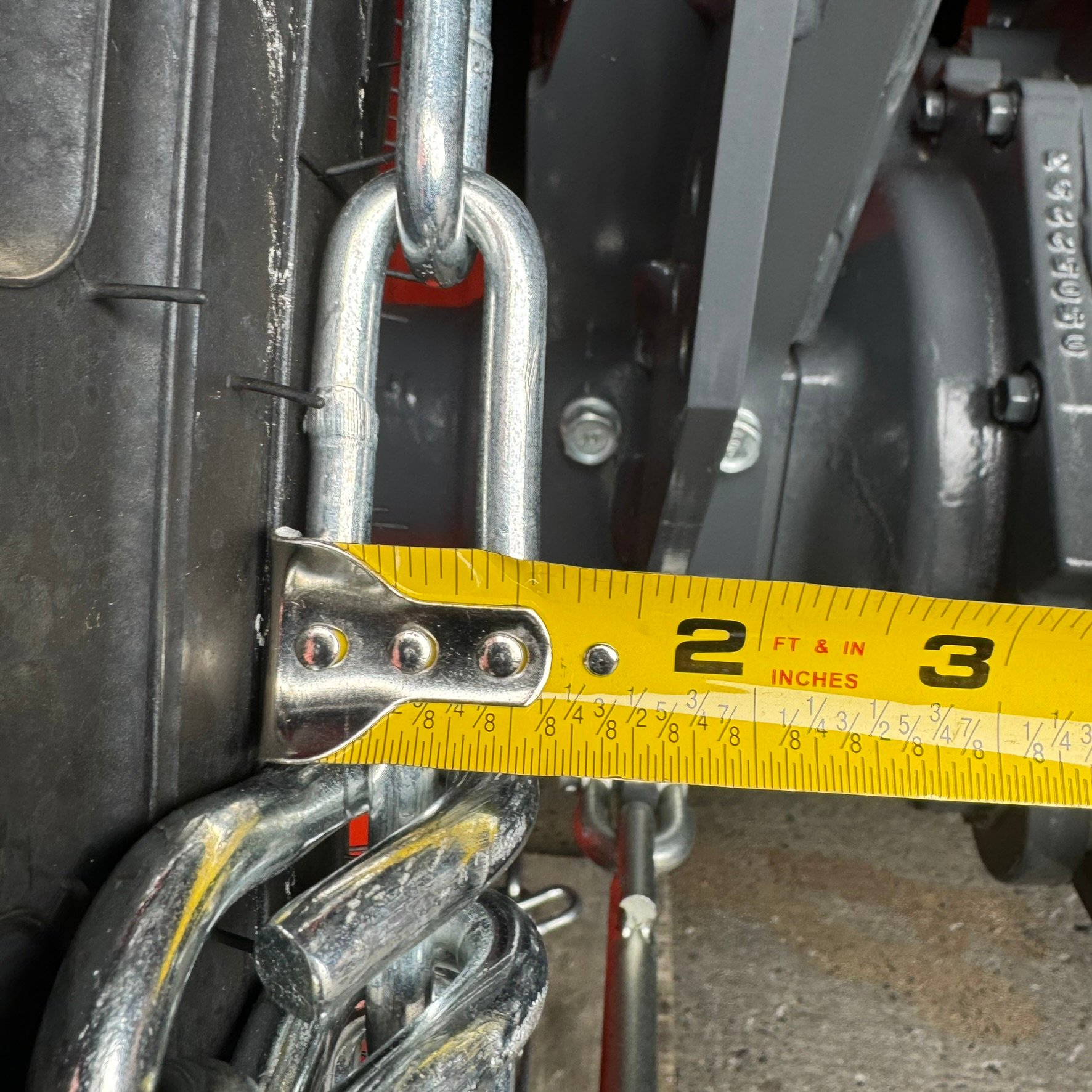Ensuring Proper Clearance for Tire Chains on Tractors and ATVs: A Comprehensive GuideUpdated a year ago
Tire chains are essential for enhancing traction on tractors and ATVs, especially in snowy, icy, or muddy conditions. However, before purchasing tire chains, it's crucial to check for appropriate clearance to ensure they fit properly and operate safely. Here’s a detailed guide on how and why to check for the necessary clearance.
Why Checking Clearance is Crucial
- Safety: Inadequate clearance can lead to the chains striking various parts of the vehicle, causing damage to the tires, wheels, and other components. This can result in dangerous situations, especially during high-speed operations.
- Preventing Damage: Proper clearance prevents the chains from rubbing against the vehicle's body, frame, or other mechanical parts, thereby avoiding potential damage.
- Optimal Performance: Ensuring proper clearance guarantees that the tire chains function effectively, providing the necessary traction without interference.
Steps to Check Clearance
Front Tires
Turn Your Steering Wheel:
- Start by turning the steering wheel fully to the left and then to the right. This movement allows you to check the clearance of the tire chains at the extreme positions of the tires.
- Observe the distance between the tire sidewall and the vehicle's steering components, including the steering arm and strut. Ensure there is enough space for the chains to move without hitting these parts.
 This picture depicts looking down from the top of the tire and the clearance from the sidewall to the steering arm turned to its extreme position. This picture depicts looking down from the top of the tire and the clearance from the sidewall to the steering arm turned to its extreme position. |  In this pic of the front tire. The Chain is a "1/4" chain that stands off the tire about 1 inch. The clearance is approximately 1 1/2 inch which leaves 1/2 of clearance which is plenty. In this pic of the front tire. The Chain is a "1/4" chain that stands off the tire about 1 inch. The clearance is approximately 1 1/2 inch which leaves 1/2 of clearance which is plenty. |
This picture depicts looking down from the top of the tire and the clearance from the sidewall to the steering arm turned to its extreme position.
Rear Tires
- Check Clearance from Frame and Fender:
- Inspect the space between the rear tire sidewall and the vehicle’s frame. Ensure that the chains will not come into contact with the frame, as this can cause significant wear and tear on both the chains and the frame.
- Look at the clearance between the tire and the fender. The fender protects the vehicle from debris thrown by the tires, and any interference from the chains can damage both the fender and the tire.
 Rear tire clearance between frame and sidewall. This chain is a 3/8" cross chain with a 5/16 side chains. This clearance is not acceptable. Rear tire clearance between frame and sidewall. This chain is a 3/8" cross chain with a 5/16 side chains. This clearance is not acceptable. | 
|
Measuring the Clearance
Use a Tape Measure:
- A tape measure can help you accurately gauge the distance between the tires and the vehicle components.
- Measure the gap with the vehicle on a flat surface and note the clearance at various points around the tire.
Consider the Chain Size:
- Compare the measured clearance with the specifications of the tire chains you intend to use. Ensure that the chain’s thickness and width fit within the available space without any risk of contact.
Adjustments and Solutions
Wheel Spacers:
- If you find the clearance is insufficient, consider using wheel spacers. These can increase the distance between the tire and the vehicle components, providing the necessary space for the chains.
Chain Tensioners:
- Use chain tensioners to keep the chains snug against the tires. This prevents excessive movement and reduces the risk of the chains hitting other parts of the vehicle.
Adjusting Tire Pressure:
- Slightly adjusting the tire pressure can sometimes provide the extra clearance needed. However, this should be done within the recommended pressure range for your tires.
Conclusion
Checking for appropriate clearance before fitting tire chains on your tractor or ATV is essential for safe and effective operation. By turning the steering wheel to check the steering arm and strut clearance for the front tires, and examining the clearance from the frame and fender for the rear tires, you can ensure that your tire chains fit properly and perform optimally. This attention to detail helps prevent damage, enhance safety, and maintain the performance of your vehicle in challenging conditions.